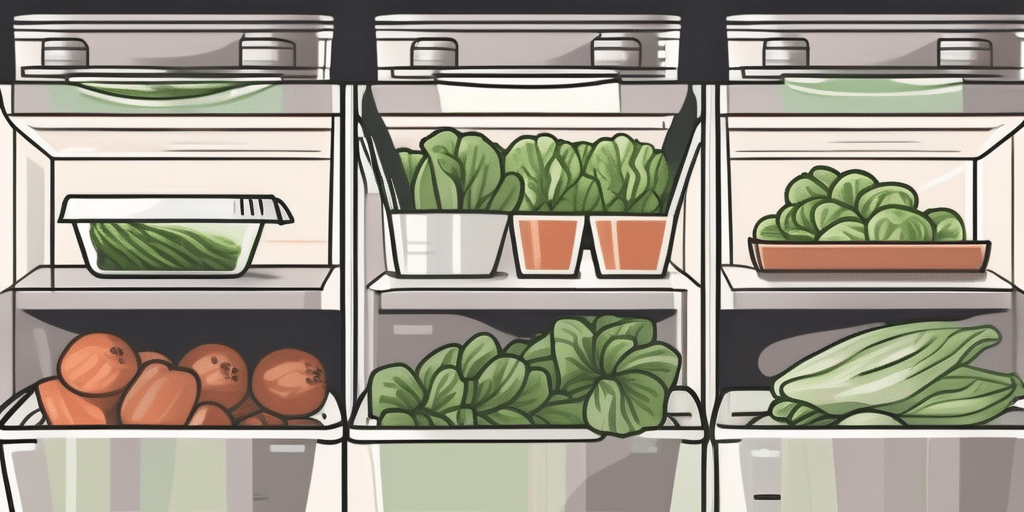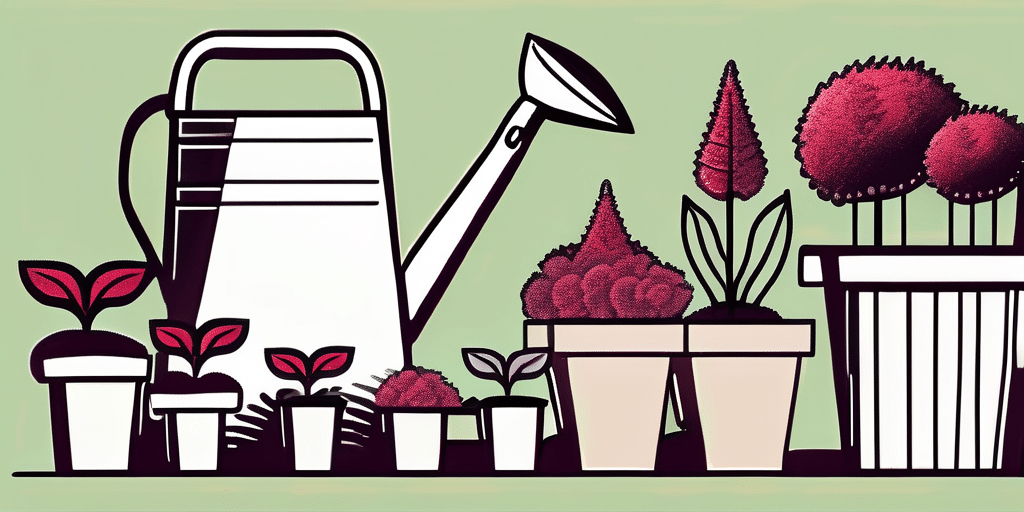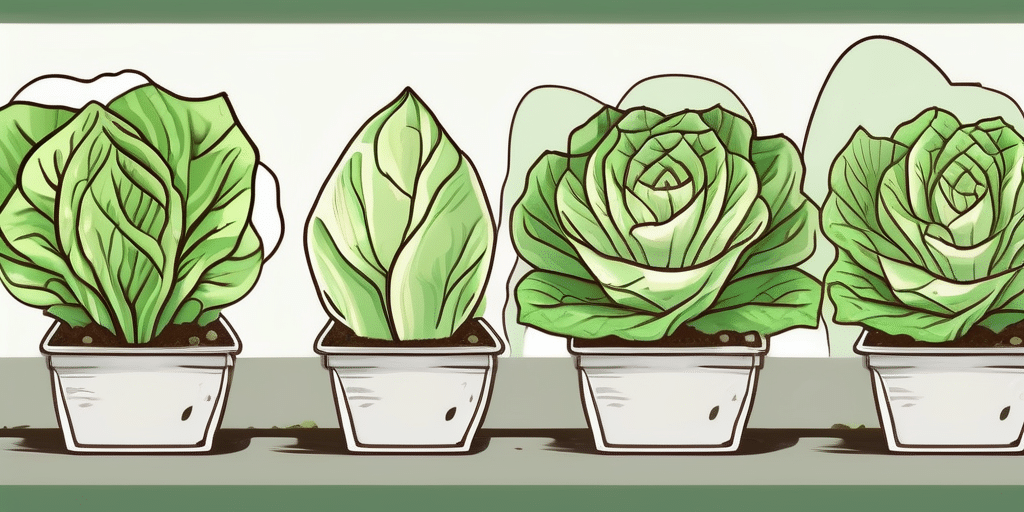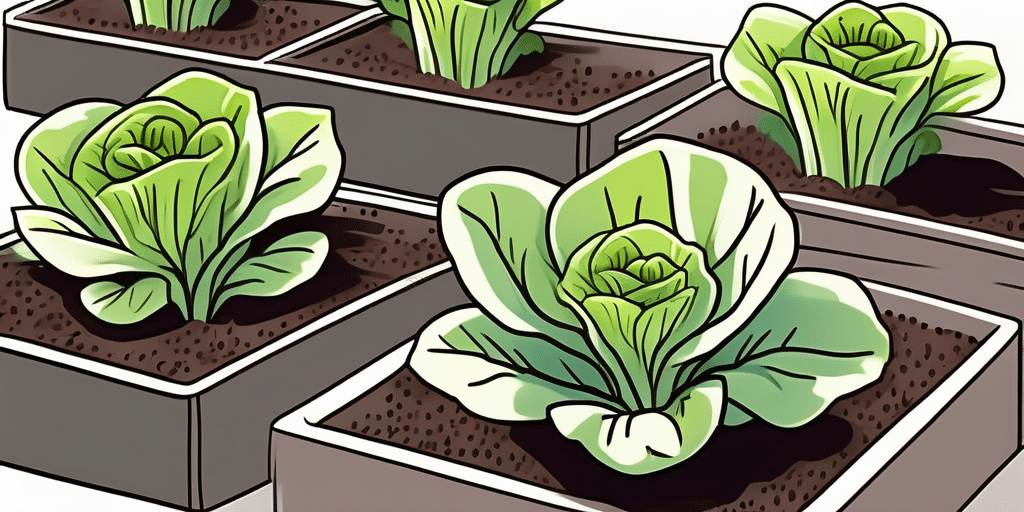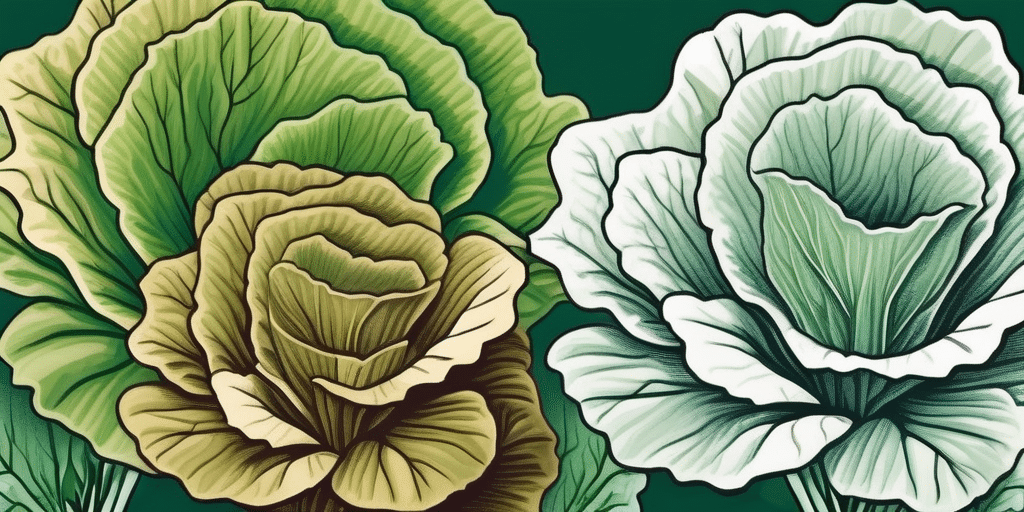If you’re a fan of salad greens, you’ve probably heard of Little Gem lettuce and Ruby lettuce. These two varieties are becoming increasingly popular choices for salad lovers everywhere. But what sets them apart? Which one should you choose for your next salad creation? Let’s take a closer look at both Little Gem lettuce and Ruby lettuce to help you make an informed decision.
What is Little Gem Lettuce?
Little Gem lettuce, also known as sucrine lettuce, is a small variety of lettuce that resembles a mini romaine. It has a compact head with tightly packed leaves that are crisp and slightly sweet. Little Gem lettuce is known for its delicate flavor and tender texture, making it a favorite among chefs and home cooks alike.
Not only does Little Gem lettuce taste great, but it also offers numerous health benefits. It’s low in calories and packed with essential nutrients like vitamin A, vitamin K, and folate. Plus, it’s a good source of dietary fiber, which helps support digestion and promote a healthy gut.
Little Gem lettuce is not only a culinary delight but also a versatile ingredient that can be used in a variety of dishes. Its small size and robust leaves make it perfect for salads, sandwiches, and even grilling. The compact nature of Little Gem lettuce also makes it ideal for serving individual portions or creating visually appealing plating arrangements.
Pros of Little Gem Lettuce:
- Delicate flavor and tender texture
- Low in calories
- Rich in essential nutrients
- Good source of dietary fiber
Cons of Little Gem Lettuce:
- Less readily available compared to other lettuce varieties
- More expensive than common lettuce varieties
When it comes to Little Gem lettuce, its unique characteristics and nutritional profile set it apart from other lettuce varieties. Its small size and intense flavor make it a standout choice for those looking to elevate their salads or dishes with a touch of sophistication. Whether used as a base for a vibrant salad or as a crisp topping for tacos, Little Gem lettuce adds a refreshing crunch and a hint of sweetness to any culinary creation.
What is Ruby Lettuce?
Ruby lettuce, also known as red leaf lettuce, is a vibrant and attractive lettuce variety that adds a pop of color to any salad. It features loose, ruffled leaves that range in color from deep red to burgundy. Ruby lettuce has a mild, slightly bitter flavor that complements a variety of salad dressings and toppings.
Like Little Gem lettuce, Ruby lettuce is a nutritional powerhouse. It’s rich in antioxidants, including vitamin C, vitamin A, and beta-carotene, which help protect against cellular damage. Additionally, Ruby lettuce provides a good amount of iron, which is essential for healthy blood circulation.
When it comes to incorporating Ruby lettuce into your diet, the possibilities are endless. You can use it as a base for salads, sandwiches, wraps, and even smoothies. Its vibrant color not only adds visual appeal to your dishes but also indicates the presence of anthocyanins, powerful antioxidants that have anti-inflammatory properties.
Pros of Ruby Lettuce:
- Vibrant and attractive color
- Mild, slightly bitter flavor
- High in antioxidants
- Good source of iron
Cons of Ruby Lettuce:
- Can have a slightly tougher texture compared to Little Gem lettuce
- May require more thorough washing to remove any dirt or grit
One interesting fact about Ruby lettuce is that its red coloration is due to the presence of anthocyanins, which are pigments commonly found in red, purple, and blue fruits and vegetables. These compounds not only give Ruby lettuce its striking appearance but also offer potential health benefits, such as reducing the risk of heart disease and improving cognitive function.
Is Little Gem Lettuce or Ruby Lettuce Right for You?
Choosing between Little Gem lettuce and Ruby lettuce ultimately depends on your personal preference and the specific dish you’re preparing. If you enjoy a delicate flavor with a tender texture, Little Gem lettuce is an excellent choice. It’s perfect for salads, sandwiches, and wraps.
Little Gem lettuce, also known as sucrine, is a small lettuce variety that originated in the Mediterranean region. Its compact size and sweet flavor make it a popular choice for gourmet dishes. This lettuce is packed with nutrients, including vitamins A and K, as well as folate and iron.
On the other hand, if you’re looking to add a splash of color to your plate and prefer a slightly bitter taste, Ruby lettuce is the way to go. It’s great for adding texture and visual appeal to salads, as well as using as a lettuce wrap for a unique presentation.
Ruby lettuce, with its vibrant red leaves, is not only visually stunning but also rich in antioxidants. The deep red color indicates the presence of anthocyanins, which have been linked to numerous health benefits, including anti-inflammatory and heart-protective properties.
Remember, variety is the spice of life, and both Little Gem lettuce and Ruby lettuce have their own unique qualities to offer. So why not experiment with both and discover your personal favorite?
Frequently Asked Questions
Q: Are Little Gem lettuce and Ruby lettuce more nutritious than other lettuce varieties?
A: While all lettuce varieties are nutritious, Little Gem lettuce and Ruby lettuce do offer specific health benefits. Little Gem lettuce is particularly rich in vitamin K, which plays a crucial role in bone health, while Ruby lettuce boasts higher levels of antioxidants compared to other green leafy vegetables.
Additionally, Little Gem lettuce and Ruby lettuce are known for their crisp texture and unique flavors, adding a refreshing crunch to any dish. Incorporating these varieties into your meals not only provides nutritional benefits but also enhances the overall taste and presentation of your culinary creations.
Q: How should I store Little Gem lettuce and Ruby lettuce?
A: To maximize their shelf life, it’s best to store Little Gem lettuce and Ruby lettuce in the refrigerator. Place them in a perforated plastic bag to maintain moisture while allowing airflow. Remember to wash the lettuce thoroughly before storing to remove any dirt or debris.
Furthermore, to keep the lettuce fresh for longer periods, you can place a paper towel in the bag to absorb excess moisture, preventing premature wilting. Proper storage not only preserves the quality of the lettuce but also ensures that you have crisp and vibrant leaves ready for consumption.
Q: Can I grow Little Gem lettuce and Ruby lettuce in my garden?
A: Yes, both Little Gem lettuce and Ruby lettuce can be grown in home gardens. They prefer cool weather and well-drained soil. Plant the seeds in early spring or late summer, and ensure they receive adequate sunlight and water for optimal growth.
In addition, incorporating organic compost into the soil can provide essential nutrients for the lettuce plants, promoting healthy development and robust flavors. By cultivating Little Gem lettuce and Ruby lettuce in your garden, you can enjoy a bountiful harvest of fresh, homegrown produce to elevate your culinary dishes.
Now that you know more about Little Gem lettuce and Ruby lettuce, it’s time to get creative in the kitchen. Whip up a delicious salad or try using these varieties in your favorite lettuce wraps. With their unique flavors and vibrant colors, Little Gem lettuce and Ruby lettuce are sure to elevate your culinary creations.
Join Our Green-Thumbed Community!
Ready to transform your passion for Little Gem and Ruby lettuce into a flourishing garden? Subscribe for free to How to Grow Everything and start building the garden of your dreams today! Receive personalized gardening advice tailored to your specific location, grow zone, and experience level. With our family’s commitment to providing the best gardening tips and deals, you’ll get the guidance you need to grow everything you can imagine—100% free, with no spam, just pure gardening gold. Let’s grow together!

